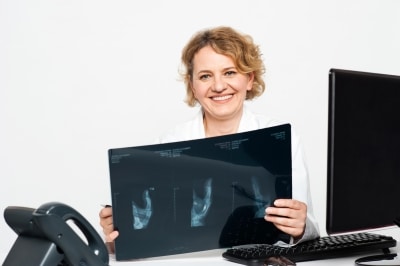An Introduction to Arthroscopy: Minimally-Invasive Joint Surgery

A minimally-invasive approach to joint diagnosis and treatment, arthroscopy was first pioneered in the early 1960’s and popularized in the 20th century. Some people also call this laser surgery.
What is Arthroscopy?
The surgical instruments used in arthroscopy are smaller than traditional instruments, and enable surgeons to view a joint area on a video monitor, and diagnose and repair torn joint tissue such as ligaments and menisci or cartilage within the joint.
Most commonly performed as an outpatient procedure, arthroscopy can be used to examine and treat almost every joint in the body. Knee arthroscopy is one of the most common procedures performed in the U.S.
Compared to open surgery, arthroscopy:
- Is usually less painful
- Is usually less costly (However, this is variable)
- Usually allows for a quicker recovery time
- Can be done on an outpatient basis without requiring an overnight stay in a hospital
- Has smaller scars
What is Arthroscopy Commonly Used For?
Arthroscopy can be helpful in the diagnosis and treatment of many non-inflammatory, inflammatory, and infectious types of arthritis, as well as various joint injuries to the knees, hips, wrist, ankles, feet, spine, shoulders and elbows including:
- Cartilage tears or damage
- Ligament strains and tears
- Cartilage deterioration
- Loose cartilage
The need for only very small incisions reduces recovery time and may increase the rate of success due to less trauma to the joint’s connective tissue. There is also less scarring, because of the smaller incisions. This procedure is especially useful for professional athletes, who frequently injure knee joints and require fast healing times.
What Should Patients Expect from Arthroscopic Surgery?
Orthopedic surgeons perform arthroscopy in an outpatient setting using general, spinal, regional, or local anesthetic. Patients can usually return home on the same day the procedure is completed.
The technique of arthroscopy involves inserting the arthroscope, a small tube that contains optical fibers and lenses, through tiny incisions in the skin into the joint to be examined. The incisions are approximately ¼ inch, on either side of the joint. The arthroscope is connected to a video camera and the interior of the joint is seen on a television monitor. The size of the arthroscope varies with the size of the joint being examined.
After arthroscopy there will be swelling around the joint, which can take 7–15 days to completely settle. It is important to wait until there is no swelling before doing any serious exercise or extensive walking, because the joint may not be fully stable; extensive exercise may cause pain and in some cases cause the knee to swell more. Often, the surgeon will reccomend guided therapy postoperatively in order to allow the patient to safely regain function.
To learn more about arthroscopy or request a consultation with Warner Orthopedics and Wellness, a Baton Rouge orthopedic surgeon’s office, please contact us at 225-754-8888.
Image courtesy of stockimages / FreeDigitalPhotos.net
Dr. Meredith Warner is a board certified, Fellowship Trained Foot and Ankle, Orthopedic surgeon practicing in Baton Rouge, Louisiana. Dr. Warner is committed to offering her patients an accurate diagnosis along with a comprehensive treatment plan in order to get them back to a pain free life. Dr. Meredith Warner specializes in the treatment of orthopedic issues, providing operative and non-operative treatment plans of orthopedic problems, including musculoskeletal pain such as chronic back, neck and foot pain, reconstructive surgery of the foot and ankle, arthritis, diabetic, hammer toe, bunion, wound care, work injuries, fitness and nutrition and osteoporosis issues.
{{cta(‘bb456f31-3aff-4ca0-a458-b217882fde1b’)}}




